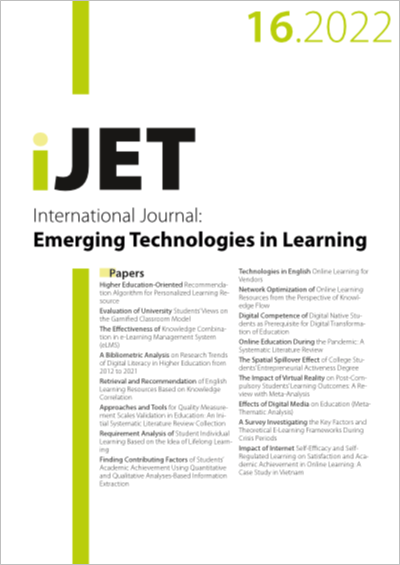The Impact of Virtual Reality on Post-Compulsory Students’ Learning Outcomes: A Review with Meta-Analysis
DOI:
https://doi.org/10.3991/ijet.v17i16.31647Keywords:
immersion, learning performance, meta-analysis, simulationAbstract
Virtual reality provides learners with an opportunity to run through situations that could not be accessed in the real world, which makes this technology an attractive alternative or a supplement to conventional instruction. This integrative review sought to bring together the impacts of immersive interventions on post-compulsory student learning performance. Nine empirical studies resulted from the screening process on the basis of eligibility criteria. Overall, there was a low to moderate mean effect size using a random-effects model (Hedge’s g = 0.31 [-0.27, 0.90], p = 0.218) for the application of high-immersion activities to education. As in previous reviews on the topic, considerable variance in the effect sizes was detected, thus precluding conclusive statements on the effectiveness of virtual educational simulations for accelerating learning outcomes in post-secondary settings. Some implications of the analysis for the educational practice are provided.
Downloads
Published
How to Cite
Issue
Section
License
Copyright (c) 2022 Elmira Daulethanovna Bazhenova, Mergembay Ramazanovich Ozenbayev, Kairat Temirgalievich Janabayev, Assyl Zheksembaevna Kurakbayeva, Sergey Anatolyevich Sochin, Gulmira Bazarkhanovna Galiyeva

This work is licensed under a Creative Commons Attribution 4.0 International License.



